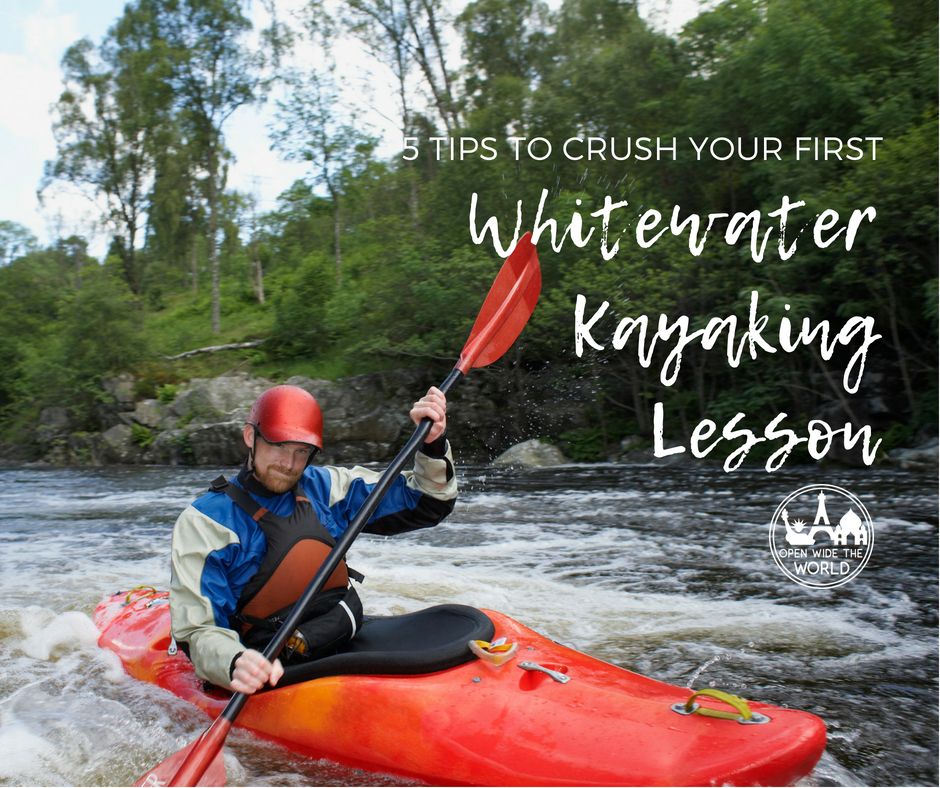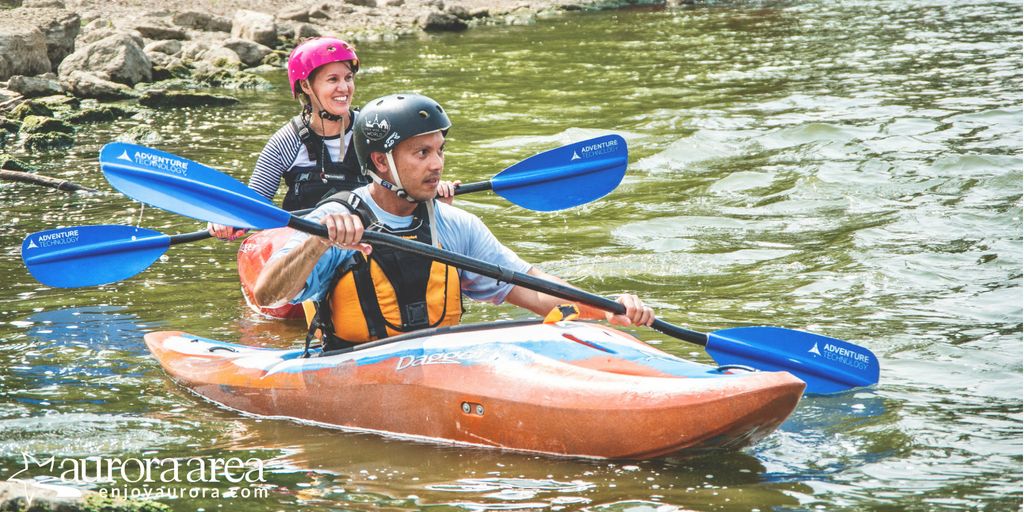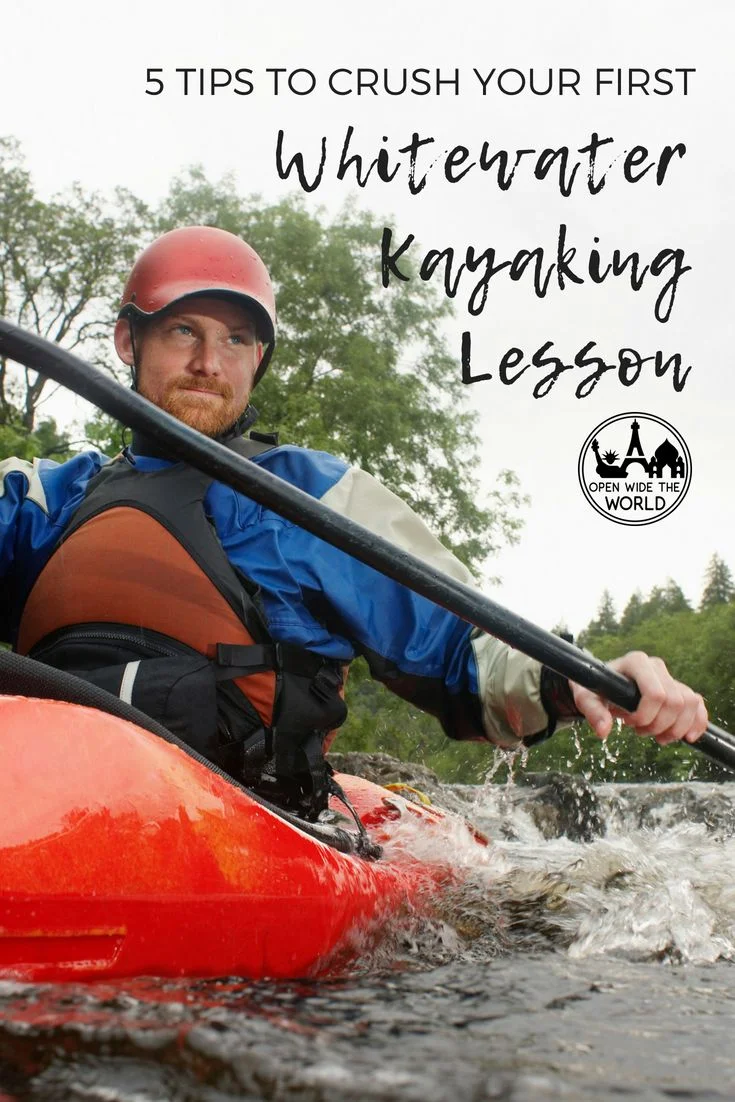5 Tips to Crush Your First Whitewater Kayaking Lesson
Walking away from the Fox River, I wasn't sure what to feel. My body hurt. My mind was exhausted. I fought the urge to cry. And yet, I felt more excited and alive than I can remember feeling in a long time. It was the end of a very intense day.
It all started when the Aurora Area Convention and Visitors Bureau invited a few travel writers to participate in a white water kayak course at the Marge Cline Whitewater Course in Yorkville, Illinois. Homer and I were thrilled to have been selected to participate.
Little did we know then that the day would turn out to be a miserable, wonderful, horrible, and amazing experience all at once. But that's how a day-long beginner's whitewater kayaking lesson feels, apparently. (Read the full story here. Starts with me hanging upside-down from a kayak... like any good story would.)
As we walked away, we both thought that maybe once was enough. But within hours, we couldn't wait to sign up again!
Have you been thinking about trying whitewater kayaking, too?
Check out our tips to survive -and thrive!- your first whitewater kayaking lesson:
Tip #1: Have the right clothing and personal gear.
Wondering what to wear whitewater kayaking? Your instructor will almost assuredly outfit you with all the actual paddling necessities, including kayak, helmet, PFD (personal flotation device), paddle and "skirt." But you will still need to think about what you’re going to wear for the day.
As a female, I started out with a base layer of a 2-piece swimsuit. Homer went with the male option of board shorts. And we built from there, as outlined here:
Clothing
Wear quick-drying, water-repelling synthetic fabrics like nylon or polyester. Wool is also a good option; although it dries less quickly, it does have moderate water-repelling properties. Plus, it traps your body heat next to you, serving as a good insulator.
For anything short of the absolute hottest air and water temperatures, avoid wearing cotton. It retains water and it sucks your body heat right into itself; it’s about the worst thing to wear in a situation where you’ll be wet, unless the air and water are both extremely warm.
And if the temps are extremely cold (meaning you add the air temp and the water temp and come up with less than 120°F), your course instructor will likely include a wetsuit or drysuit in your gear rental package. As above, plan to avoid wearing cotton under the wetsuit/drysuit; stick to wool and synthetics.
Footwear
Footwear will serve two purposes: protection and warmth. The latter is only necessary in cool or cold air/water situations. The former is vital for any river excursion, as walking over jagged or slippery rocks in bare feet can pose obvious risks.
At minimum, you’ll need foot coverings that fully attach to your feet. Flip flops are not a good option for kayaking; if you capsize, or your instructor has you practice capsizing -which he almost assuredly will!- those little plastic cuties will take off downriver so fast, you won’t even see 'em leaving.
Neoprene booties are probably the best option, as they can combine safety and warmth, as well as being easy-ish to swim in (provided they fit correctly), but they are more of a pricey investment than you might want to make for your first outing. So look through what you already own and grab your Tevas, Chacos, Keens or the like, or even a minimally bulky sneaker and keep your feet warm and protected.
Other gear
Nose clips are an important, cheap investment for a whitewater kayaking lesson. Paddling in a “living” body of water (meaning it’s full of the bacteria normal in any living biome, not “killed” by chlorine) means your nose will serve as an entry point for water-borne bacteria if/when you capsize.
You might also consider a small dry bag to keep your essentials (like car fob and cell phone) dry. And don't forget a carabiner to attach the bag to the inside of your kayak, or the river floor will inherit some pricey items at first flip.
Tip #2: Know that the experience might suck… for a while, and at intervals.
Capsizing can take a lot out of you, physically and mentally. But like many challenges, it leads to progress! (Photo: James Cardis, Aurora Area CVB)
Unless you’re accustomed to pushing your physical and mental boundaries simultaneously and while underwater on a regular basis, the skills practiced in a whitewater kayaking course are probably at least one level beyond your comfort zone. For us, the skills were more like two levels outside our comfort zone.
So we experienced a rollercoaster day of alternating highs and lows. Extreme highs and lows! Myself, I considered calling it a day at three different points during the class. And even found myself on the verge of tears toward the end. Homer’s experience was similar, albeit minus the urge to cry (or so he says). Clearly, there were some true low points to the day.
But over the course of the day, we had even more moments that were thrilling. Or exciting. Or exhilarating. Or all three combined, which helped us push through the tougher times.
Tip #3: Self-awareness is key.
Closely related to Tip #2, we advise being aware your skills and strength, knowing your limits, and respecting your own personality/temperament.
If you know you’re a strong swimmer who thrives on conquering fears, then by all means, push yourself hard all day! But if you know your water competence is iffy and you aren't accustomed to pushing your limits too far, then cut yourself some slack and only attempt what feels appropriate.
As our instructor Jeff reminded us, kayak lessons should be “challenge by choice.” Try anything you know is a good fit for you. And let the rest wait for another day. Or another paddler.
Tip #4: Consider multiple short lessons vs. a one-day crash course.
Tips #2 and #3 probably make it clear why Tip #4 exists. The physical and mental work of whitewater kayaking is exhausting, and becomes cumulatively moreso as the day goes on. The learning process would seemingly be less brutal if divided into smaller bursts.
We would prefer multiple, shorter lessons if we could go back and do this over from the start. But in the absence of schedule format options, we would, of course, choose the single-day crash course if the only other option was no course at all.
Tip #5: Don't overthink this.
Sure, Tips #2-4 lean toward a lot of analysis: is this too hard or just right? Should I push myself more or give myself a break? Did I choose the right schedule format or should I have signed up for fewer/more hours?
Those are all helpful questions... if you can keep them in check. But at some point, it will be of great benefit to just tell yourself, "F--- it, I'm here. Let's do this!" Then paddle in, stay calm, remember your training, and let the flow of the water take you.
And when the day is done, congratulate yourself on all of the above!
Judging from our smiles, our first whitewater kayaking lesson was a huge success! (Photo: James Cardis, Aurora Area CVB)
Bonus tip: be prepared to need a recovery day.
No matter how strong and flexible a body is at baseline, a new sport will invariably challenge muscles in new ways. Now try that new sport for about six hours straight, plus throw in some adrenaline (read "fear!"), and you've got a recipe for sore, aching muscles for a few days. Light stretching the morning after might feel nice; consecutive days of high-demand exercise maybe not as much.
Have you tried whitewater kayaking?
Share your tips in the comments!
And don't miss Traveling Ted's humorous perspective on our group's day!
Think whitewater kayaking in the suburbs is surprising? Then check out surfing on Lake Michigan!
Not ready for extreme paddling? Up your basic water game!
→ 10 Tips for Beginner Paddlers Learned at Canoecopia
Thinking of trying more outdoor adventures? How about camping!
→ 5 Tips for First-time Campers from a First-time Camper
Too cold for kayaking or camping? Try the luge!
Pin this post for your next outdoor adventure!
We participate in Amazon's affiliate program, which allows sites to earn advertising fees. There is no additional cost to readers making Amazon purchases through our site.





